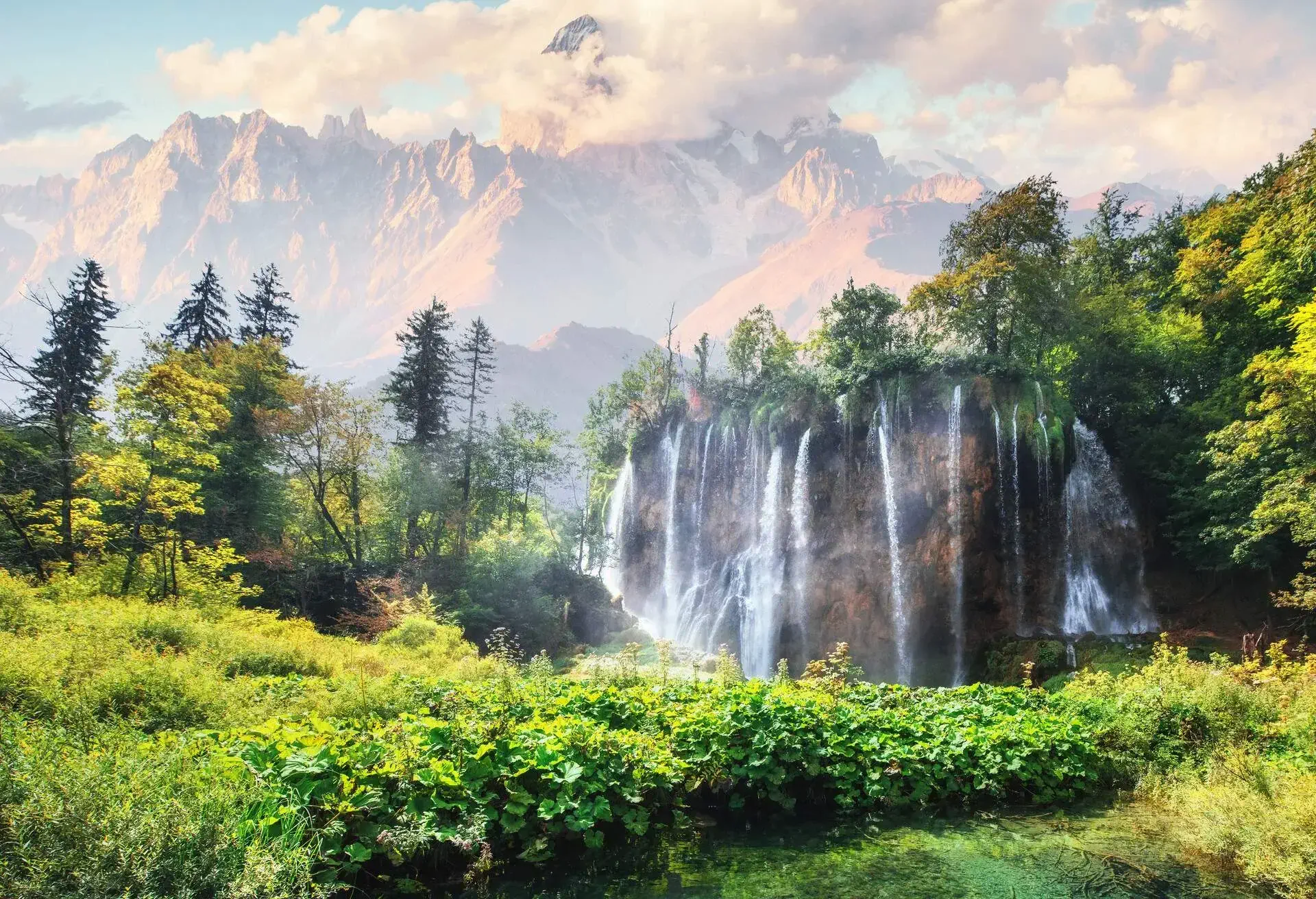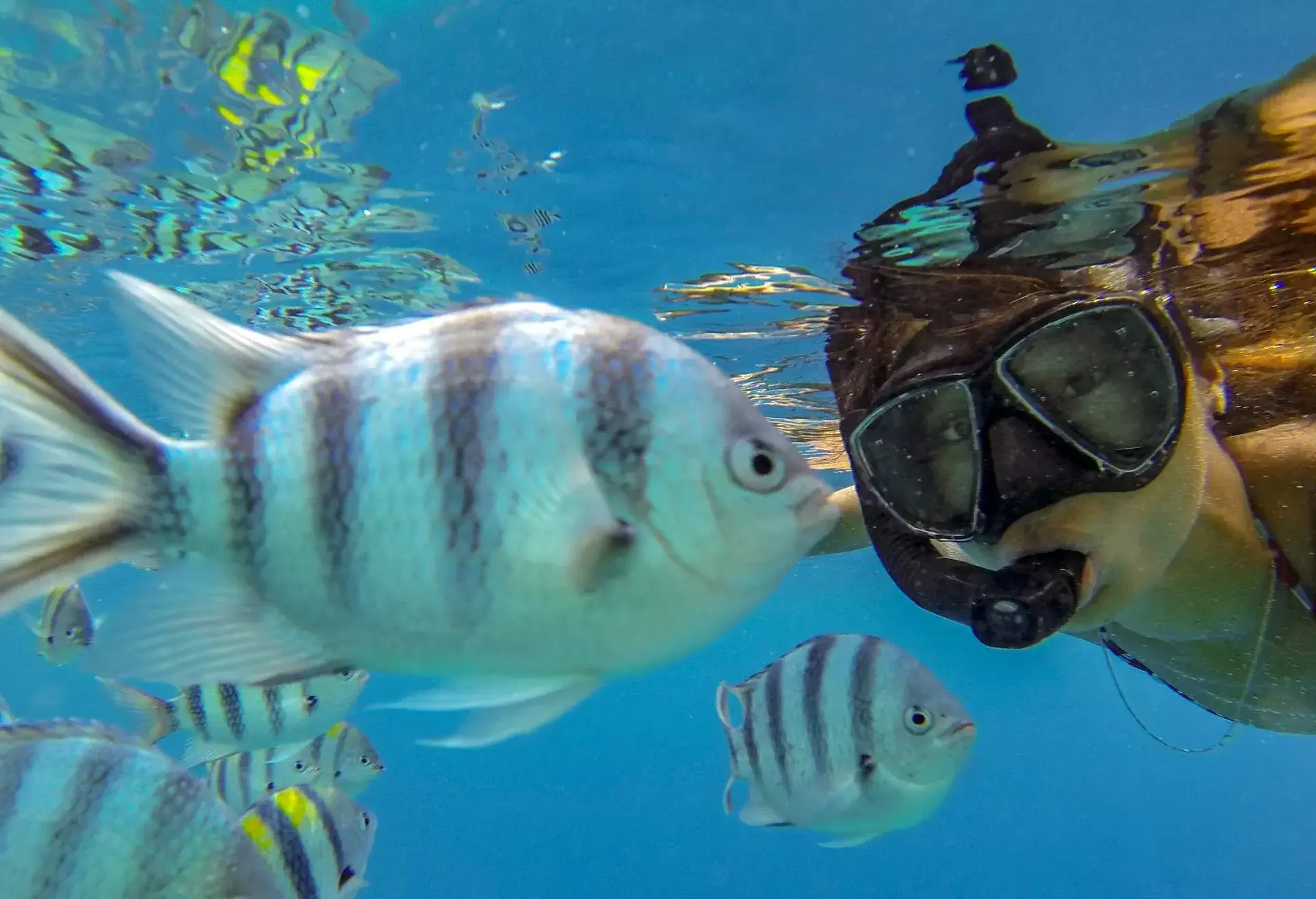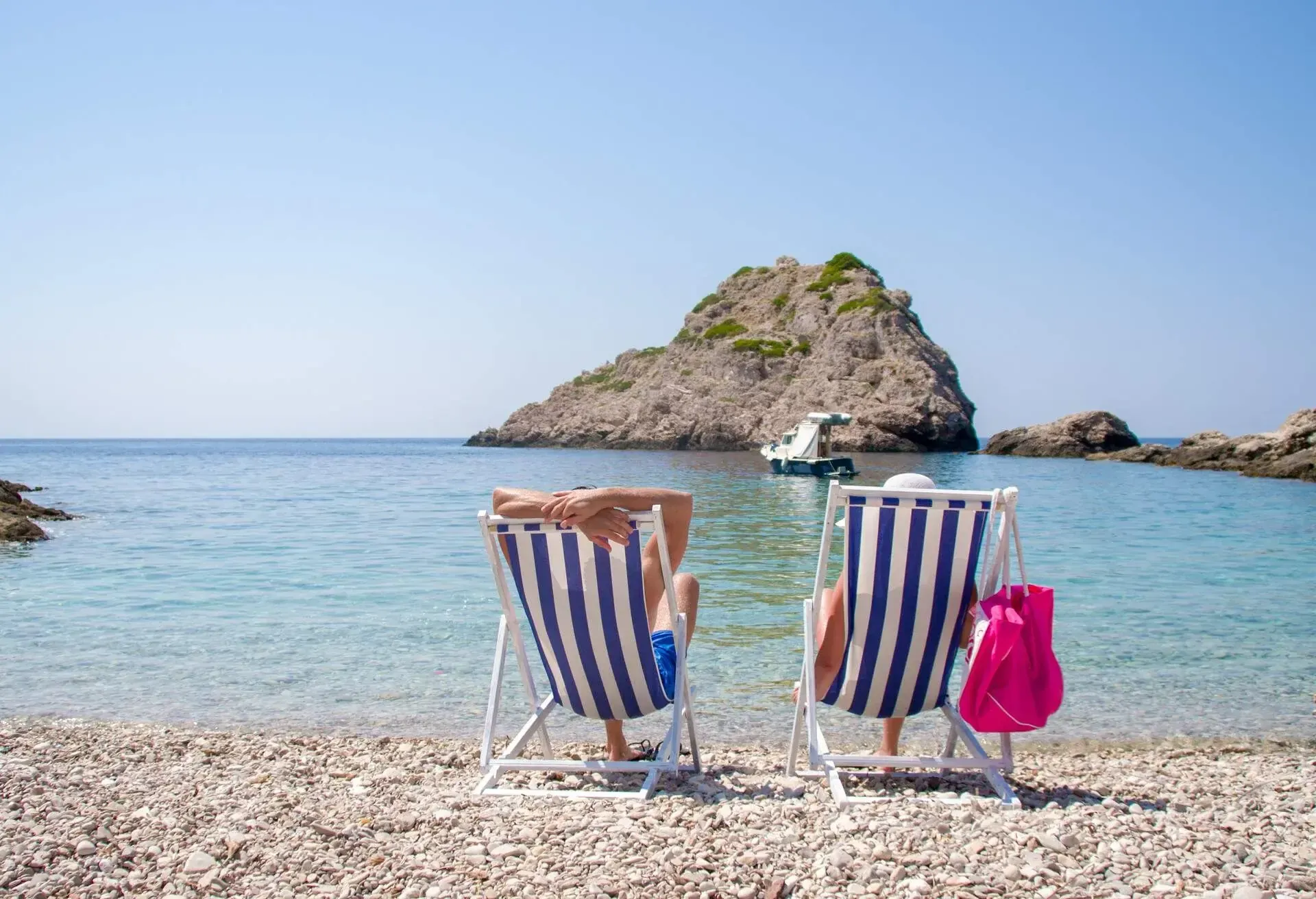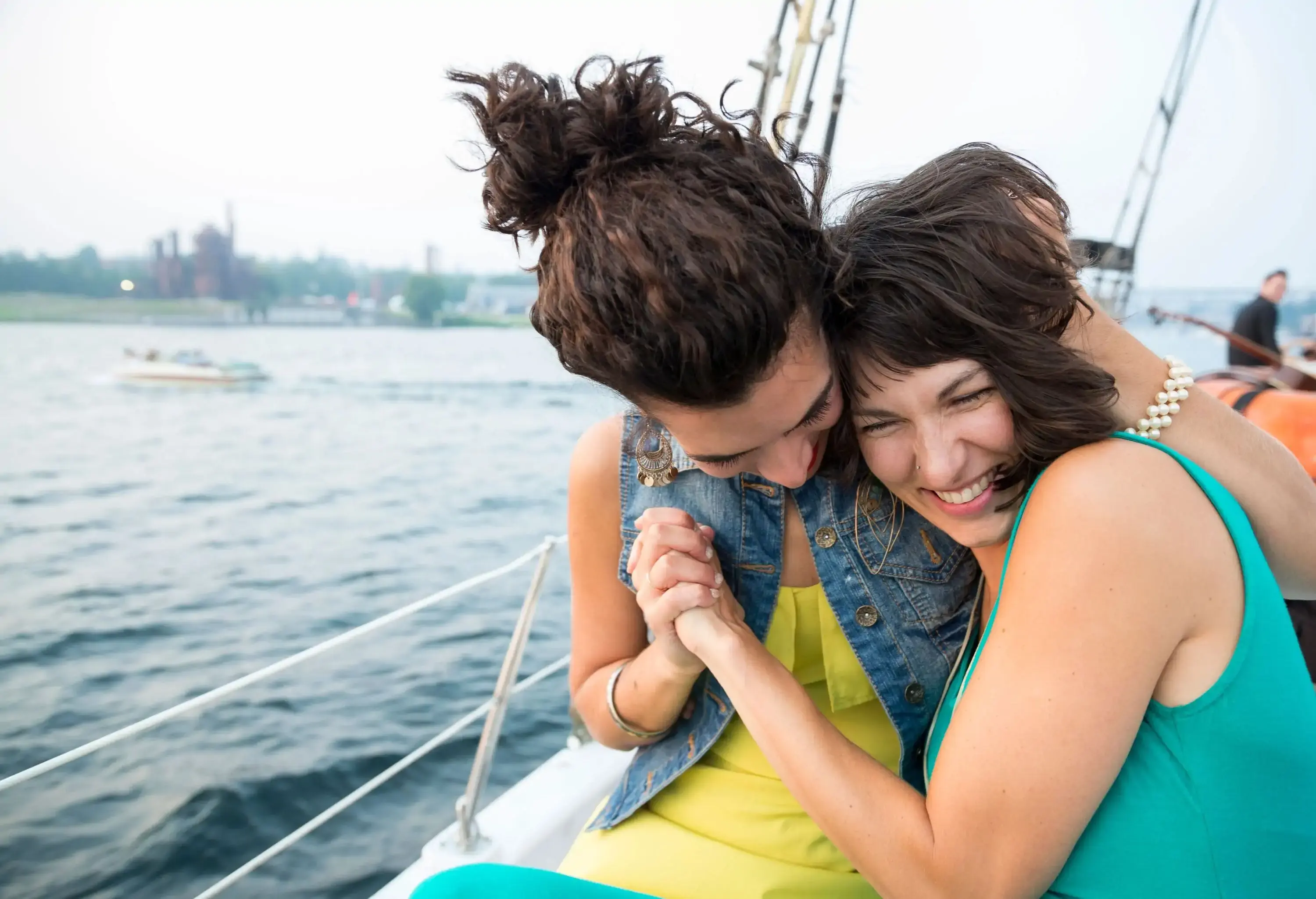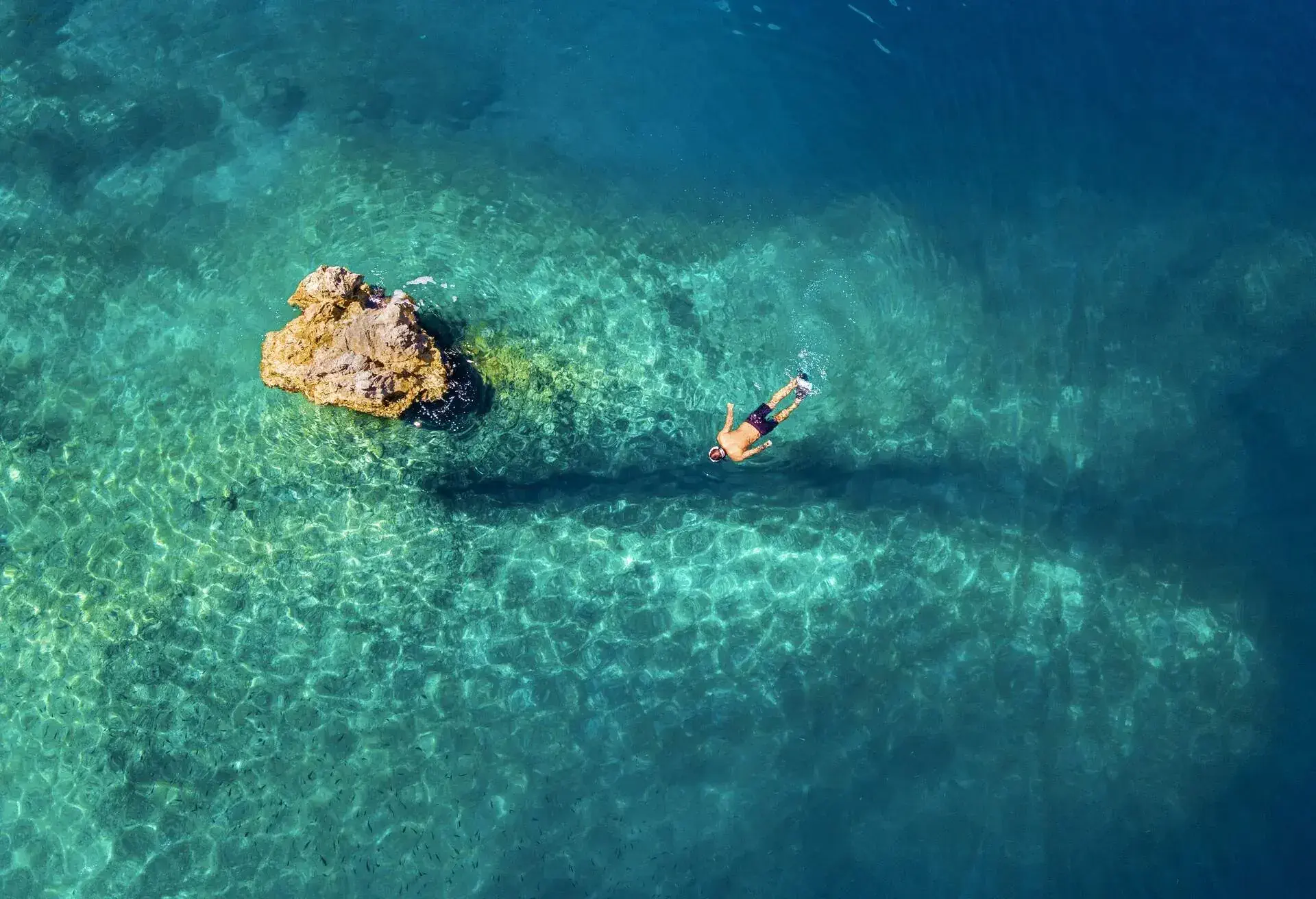The waterfalls in Croatia often come with breathtaking scenery and are surrounded by quaint little villages full of character, with histories that go back to Neolithic times. With a little digging, you will be surprised at what you can uncover away from the crowds.
Plitvice Lakes National Park
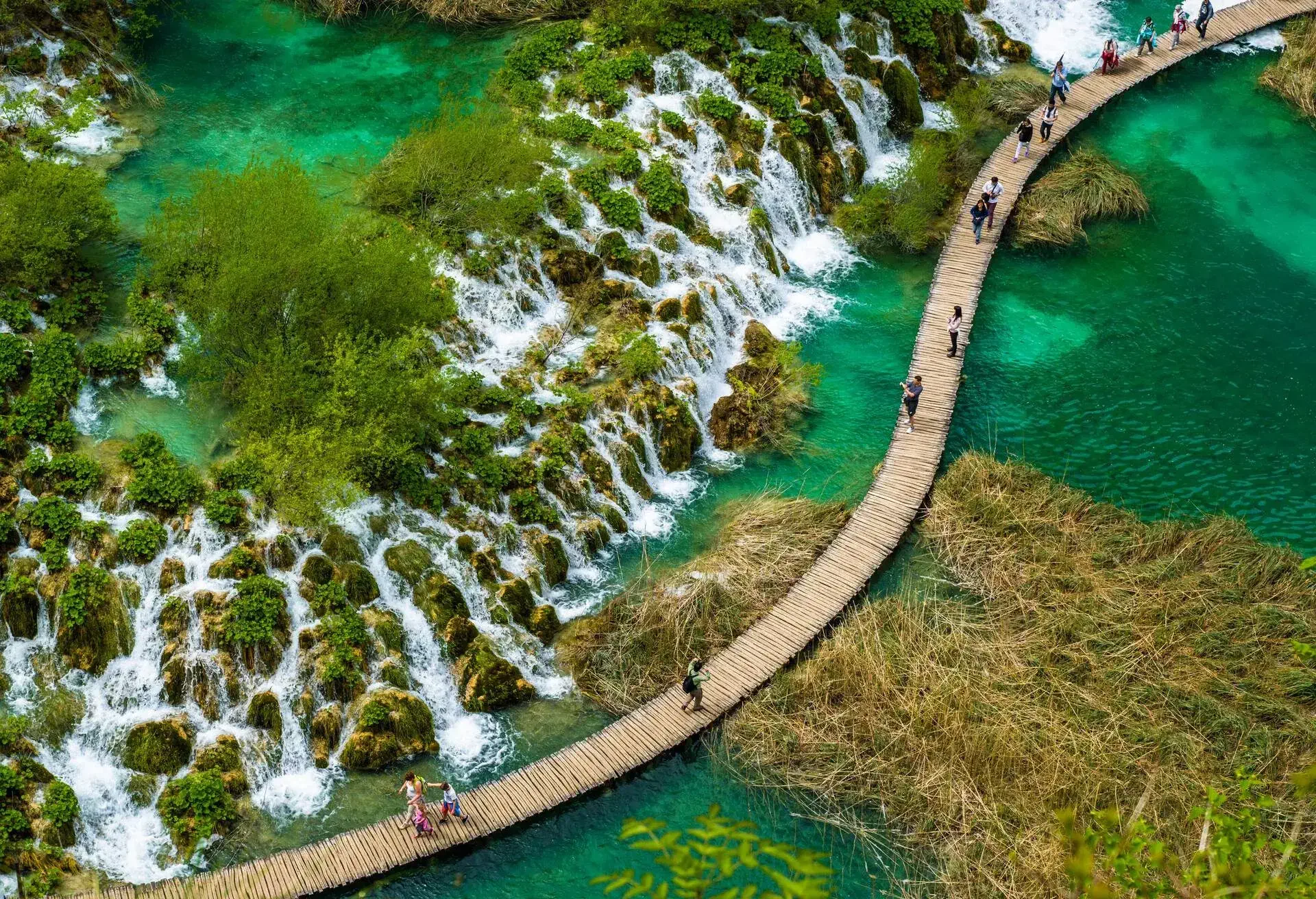
A trip to Croatia isn’t complete without visiting Plitvice Lakes National Park. Centrally located, between Croatia’s capital of Zagreb and Zadar on the coast, it is Croatia’s largest national park and a UNESCO World Heritage Site. One of its most popular attractions is the collection of lakes interconnected by a series of waterfalls over a distance of eight kilometres.
The park is set in deep woodlands, home to deer, bears, wolves, boars, and rare birds, and is open daily all year round. There is a small entrance fee, which varies depending on the time of year you visit.
Veliki Slap
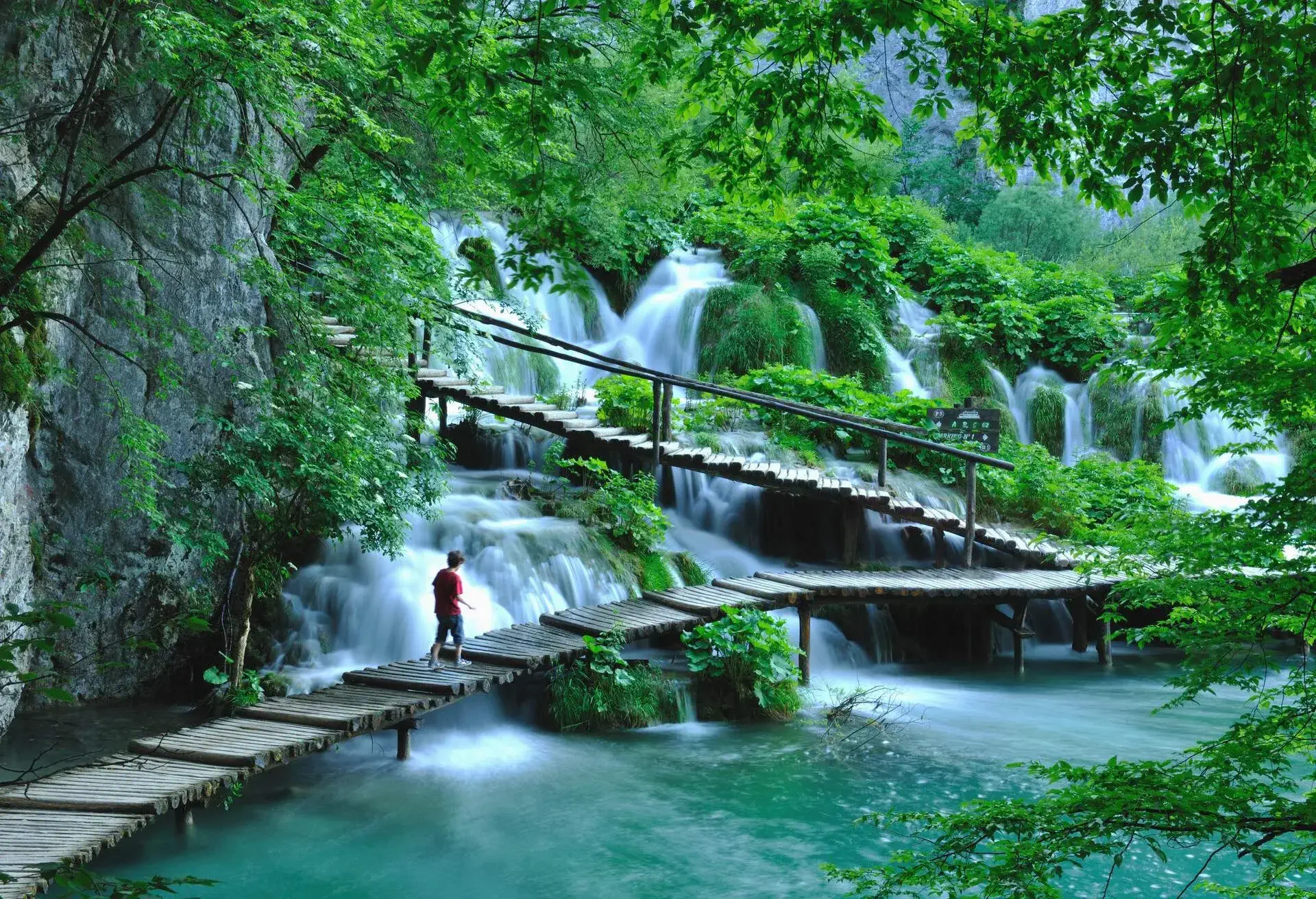
Also known as The Great Waterfall, Veliki Slap is not only a very beautiful waterfall found in the park but is also considered to be the highest in Croatia. Whilst all the other waterfalls here are formed by water spilling from the upper to the lower lakes, Veliki is formed by the Plitvica Potok River, which extends three kilometres west of the fall. It’s not only great to visit in the summer; it’s also a marvel to witness in the winter months, when the waters freeze, forming a giant natural ice sculpture. Hike further up from the Lower Lakes to Plitvice Selo village, where you will be able to view the waterfall from above.
Sastavic Slap
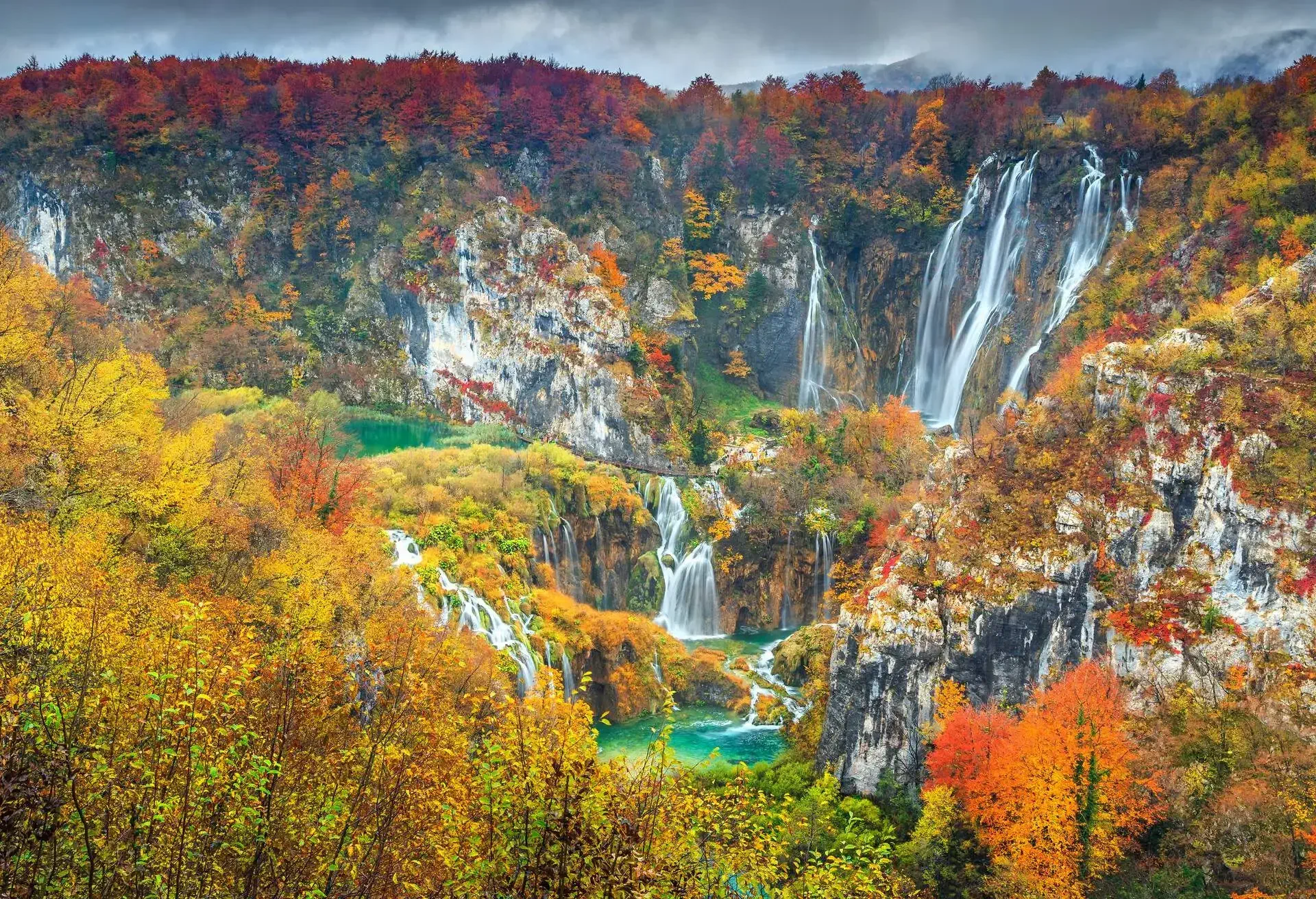
With Veliki Slap in the background, Sastavic Slap is another beautiful waterfall located in the Lower Lakes region of the park. That in itself gives the waterfall a stunning backdrop, but you can’t ignore its beauty as the River Korona drops down an impressive 26 metres. This part of the park, with its brown rocks and clear blue water at the bottom, is not well known by many, so it provides a secluded area for some peace and quiet. The best viewpoint of the waterfall is by the entrance.
Krka National Park
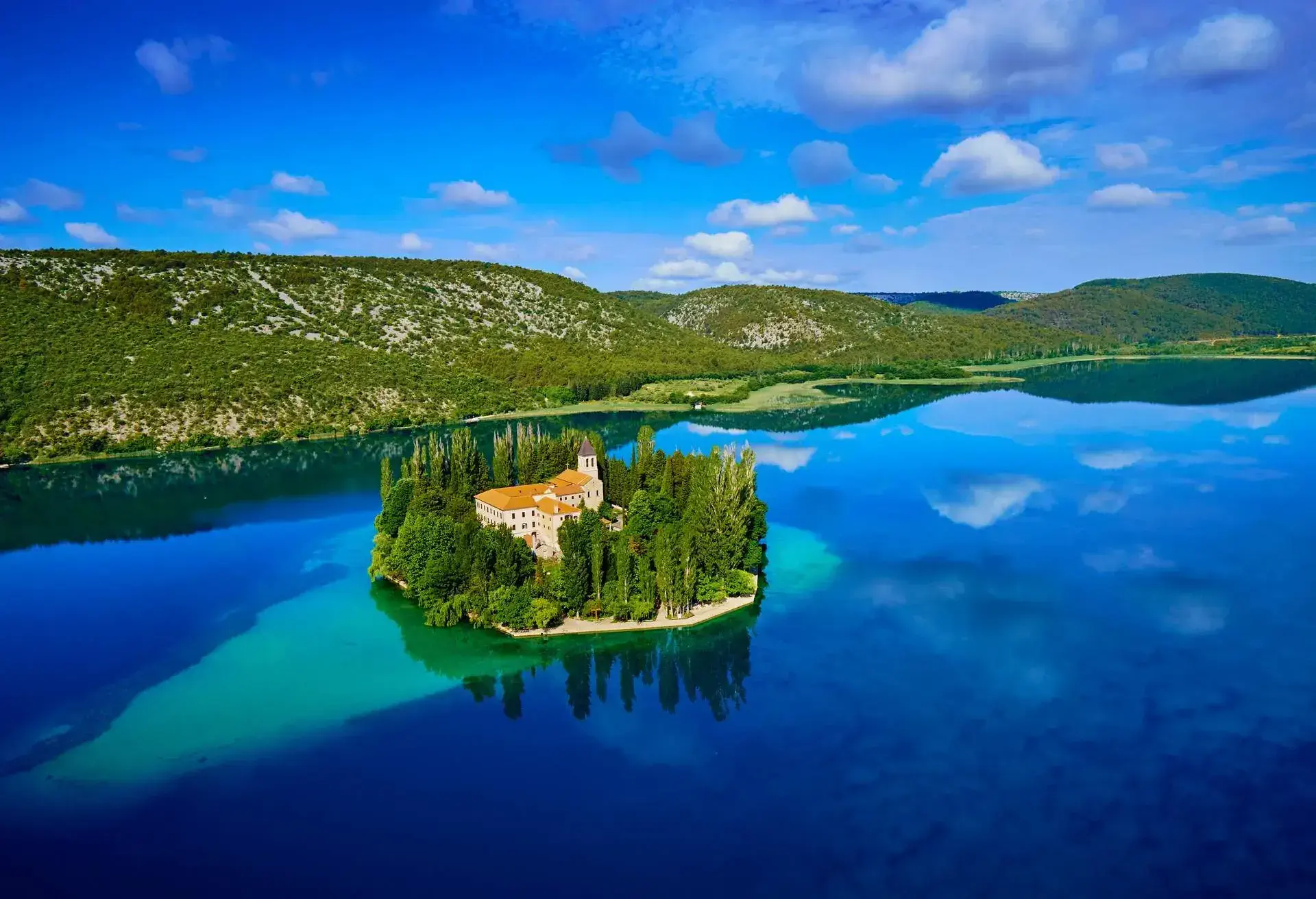
Krka National Park, located in Dalmatia and about 10 kilometres inland from Sibenik, is also a UNESCO World Heritage Site. It’s well worth a visit, not only because it’s home to one of Croatia’s most famous waterfalls, Skrandinski Buk, but also because it has a small island, Visovac, which was once occupied by monks and now houses a library and various well-preserved artefacts.
Skradinski Buk
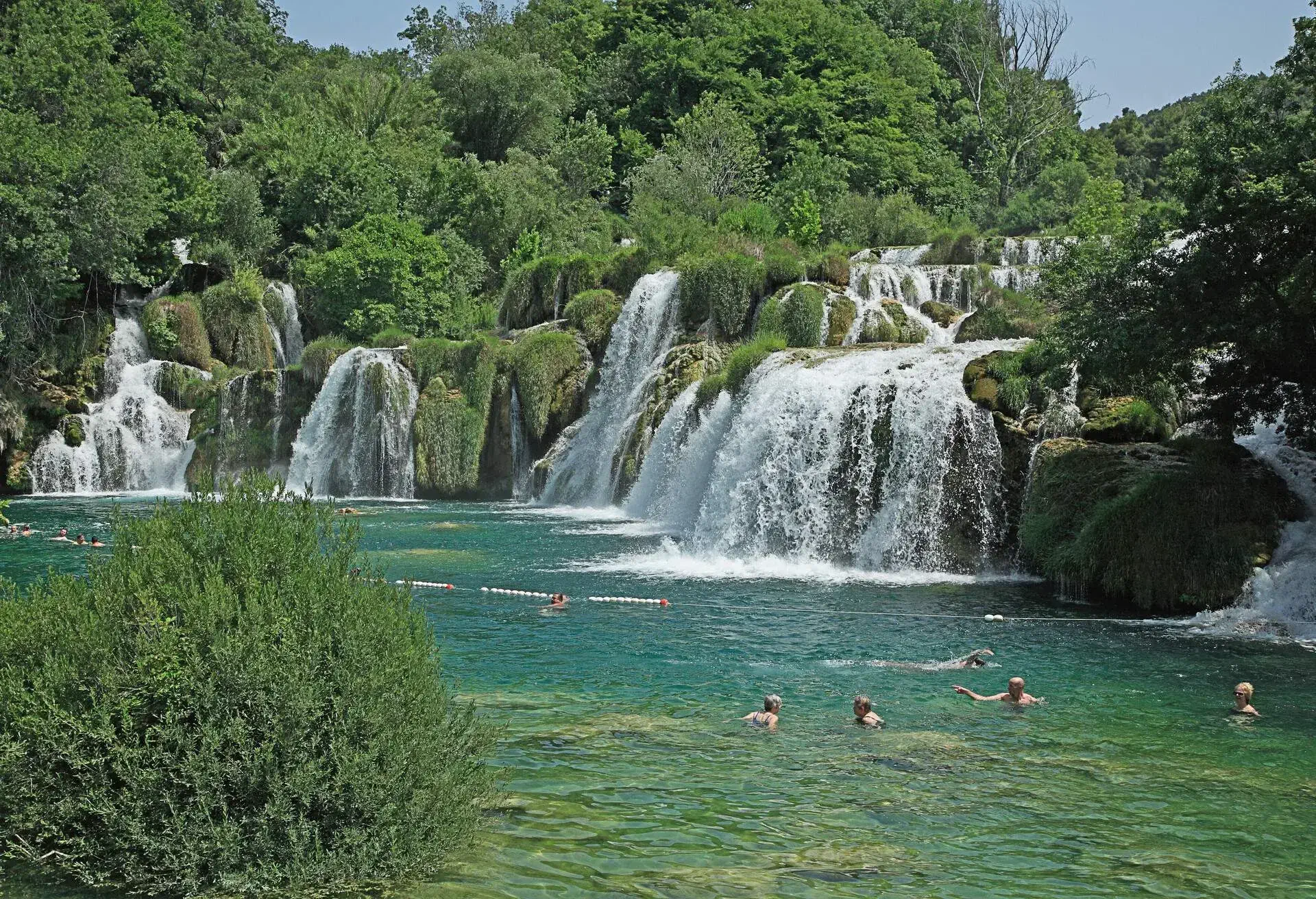
Perhaps one of Croatia’s best-known waterfalls, made popular by the fact that you could once swim in its waters, Skrandinksi Buk is still worth a visit. Fed by the River Krka, from which the park also gets its name, the waterfall is a series of waters cascading over various heights, totalling about 40 metres, to form one of the longest and most beautiful waterfalls in Croatia.
It may sound strange, but the rainy season is one of the best times to visit, when the increased water volume makes the waterfall appear even more majestic. A shuttle bus from the Lozovac entrance takes visitors to the waterfall, whereas between April and November, visitors are transported by boat from the Skradin entrance. There is, of course, a nature trail from either entrance, should you prefer trekking.
Roski Slap
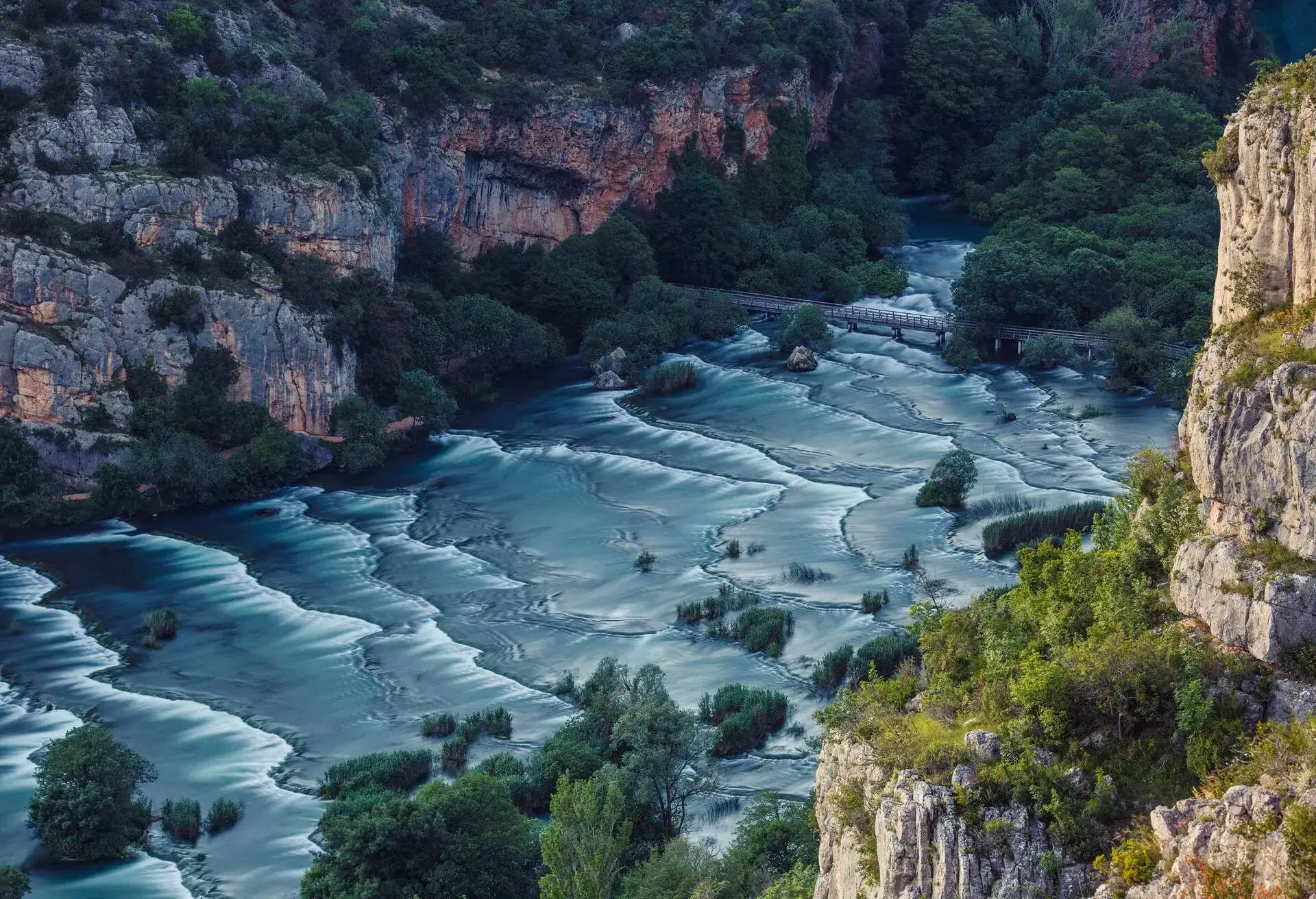
Roski Slap is the other famous waterfall within Krka National Park, also consisting of a series of waterfalls, 12 in total, which the locals fondly refer to as The Necklace. The main waterfall can be found where the River Krka falls from a height of 15 metres into Visorac Lake. There are various wooden bridges from which you can admire it from all angles.
The Ozidena Cave above the waterfall is an archaeological site dating back to the Neolithic era, with a road over the waterfall dating back to Roman times. Several mills, historically significant and very much a part of the culture here, have been restored to their original functions. The waterfall can be reached by boat from Lozovac, which includes a roughly 30-minute stop on the island of Visovac. If you like trekking, then take the 8.5-kilometre trail from the island.
Una National Park
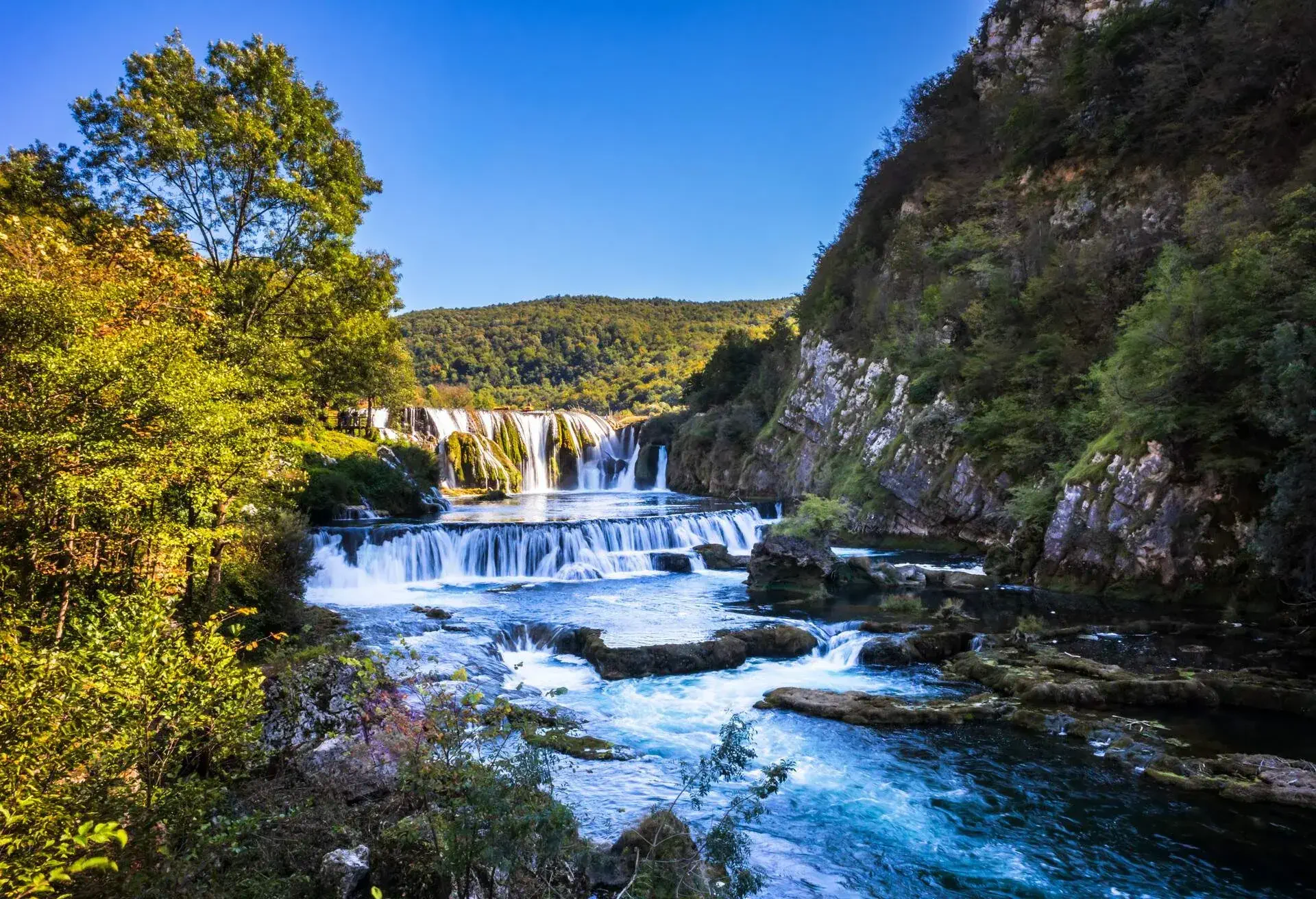
On the border of Croatia and Bosnia–Herzegovina, mainly on the Bosnian side, you will find Una National Park. It was created in 2008 to protect the unspoiled area around the River Una, and it may also be the beginning of the Krka River as one of its most distant tributaries.
Strbacki Buk
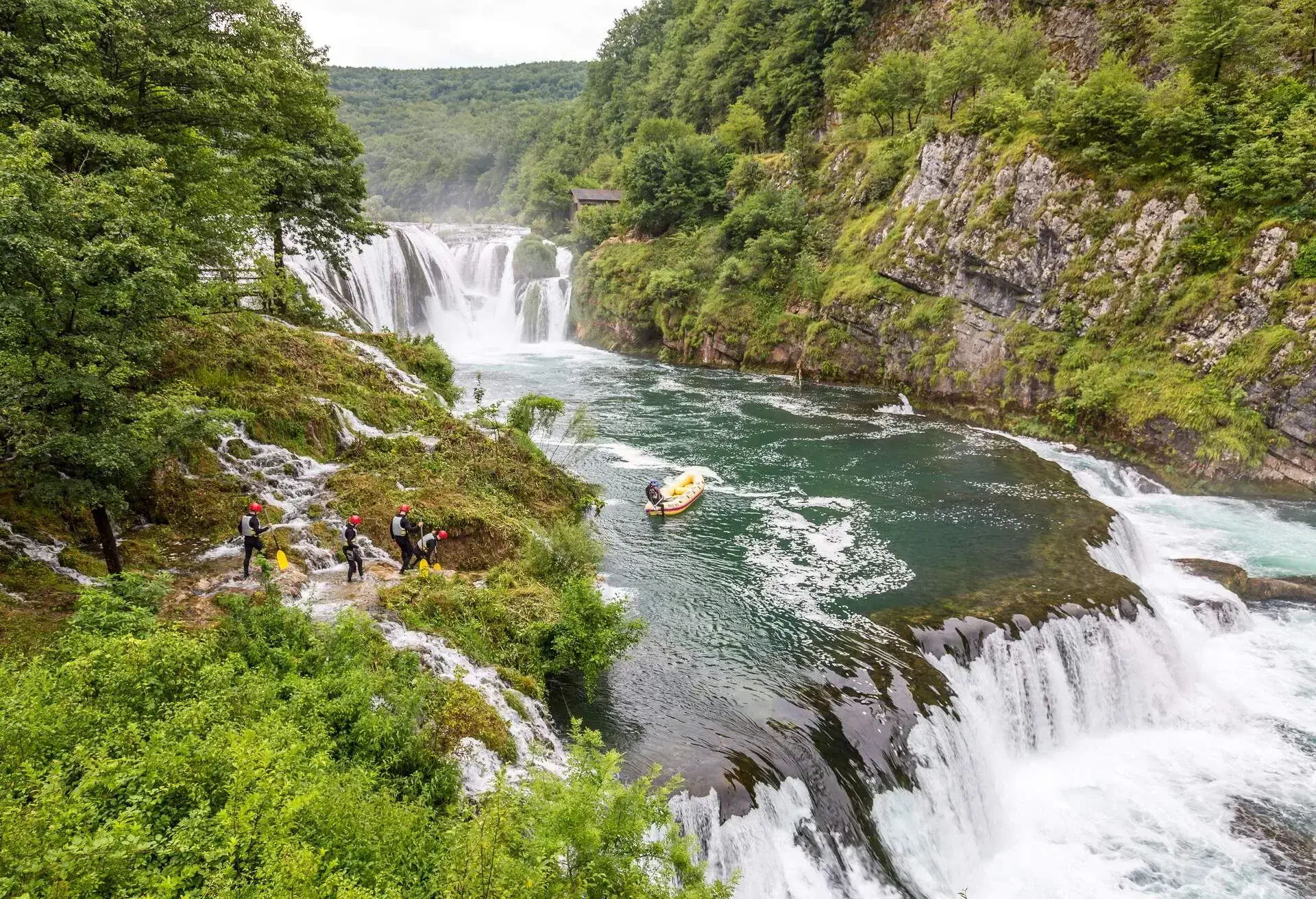
Strbacki Buk is quite simply the most impressive, if not the highest, waterfall in Una Park, hence worth a visit if you are in these parts of Croatia. The waterfall cascades down an impressive 40-metre-wide and 23-metre-high drop over three travertine sections, the longest drop being 18 metres. It can be accessed by an 8-kilometre dirt road from the town of Orasac; don’t let that put you off, as there are wonderful secluded swimming spots along the way. This waterfall and park are worth the effort to get to, especially for a nature lover.
Other waterfalls in Croatia
Not all the waterfalls in Croatia are located within a national park; some are found on farms or in charming little remote villages, and so offer the opportunity to sample local life first-hand.
Gologoricki Dol
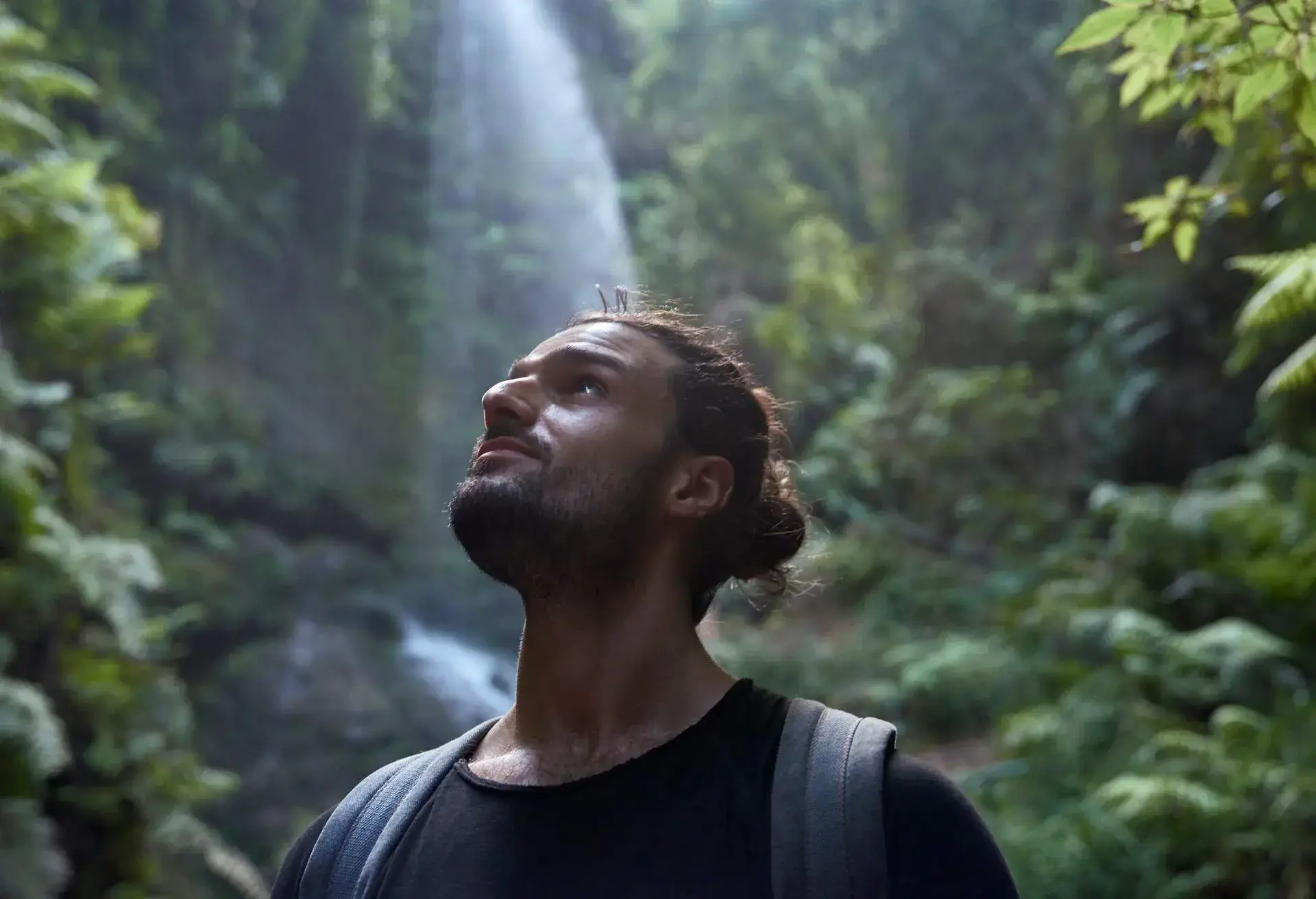
Once a country retreat for the wealthy due to its climate, the peninsular region of Istria is made up of charming and unspoilt little villages that offer a window into a Croatia of years gone by. Near one of the villages, a mere five kilometres away from Cerovlje, is Gologoricki Dol. A stream runs through the farm to drop into a pond creating an incredibly beautiful waterfall. The waters of the pond are crystal clear and wonderful for a swim. You can also have access to the farm, where you can pick mushrooms and blackberries or let the children mingle with barnyard animals. A truly memorable experience.
Butori Ponor
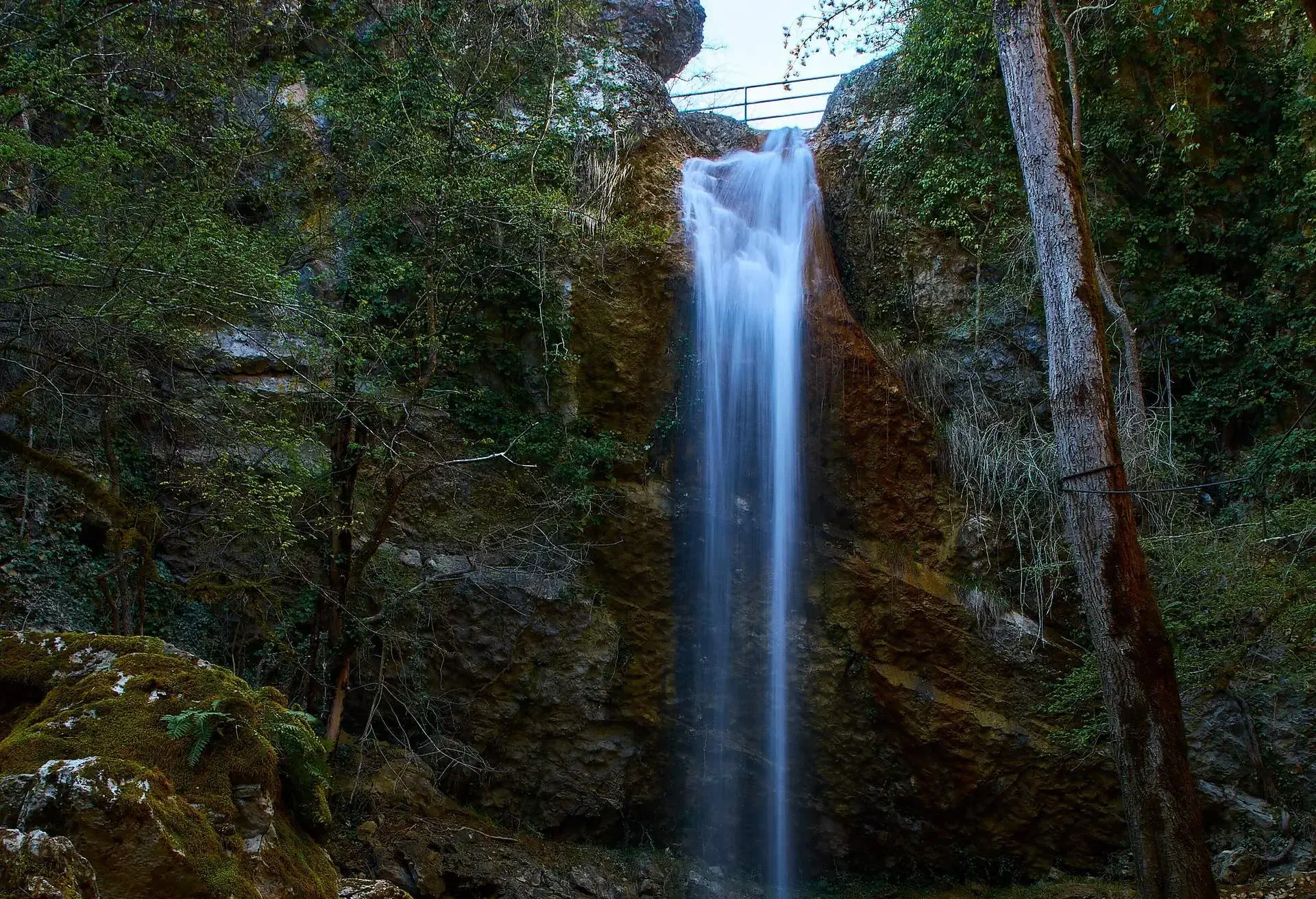
Near the Momjan village in central Istria, you will find the River Ardila, which falls to create the Butori Ponor waterfall. The water falls into a lake that seems to disappear into an abyss, creating an almost mythical feel to the area. A fenced path leads down to the waterfall, and although you can’t walk around the lake, you can walk under the waterfall, enhancing its charm. The area provides a peaceful space and has even attracted poets from around Europe, who congregate here every August, with bonfires, lanterns and torches contributing to its magic. There is an abandoned mill worth exploring, with the village of Butori only a 2.5-kilometre drive away.
Rastoke
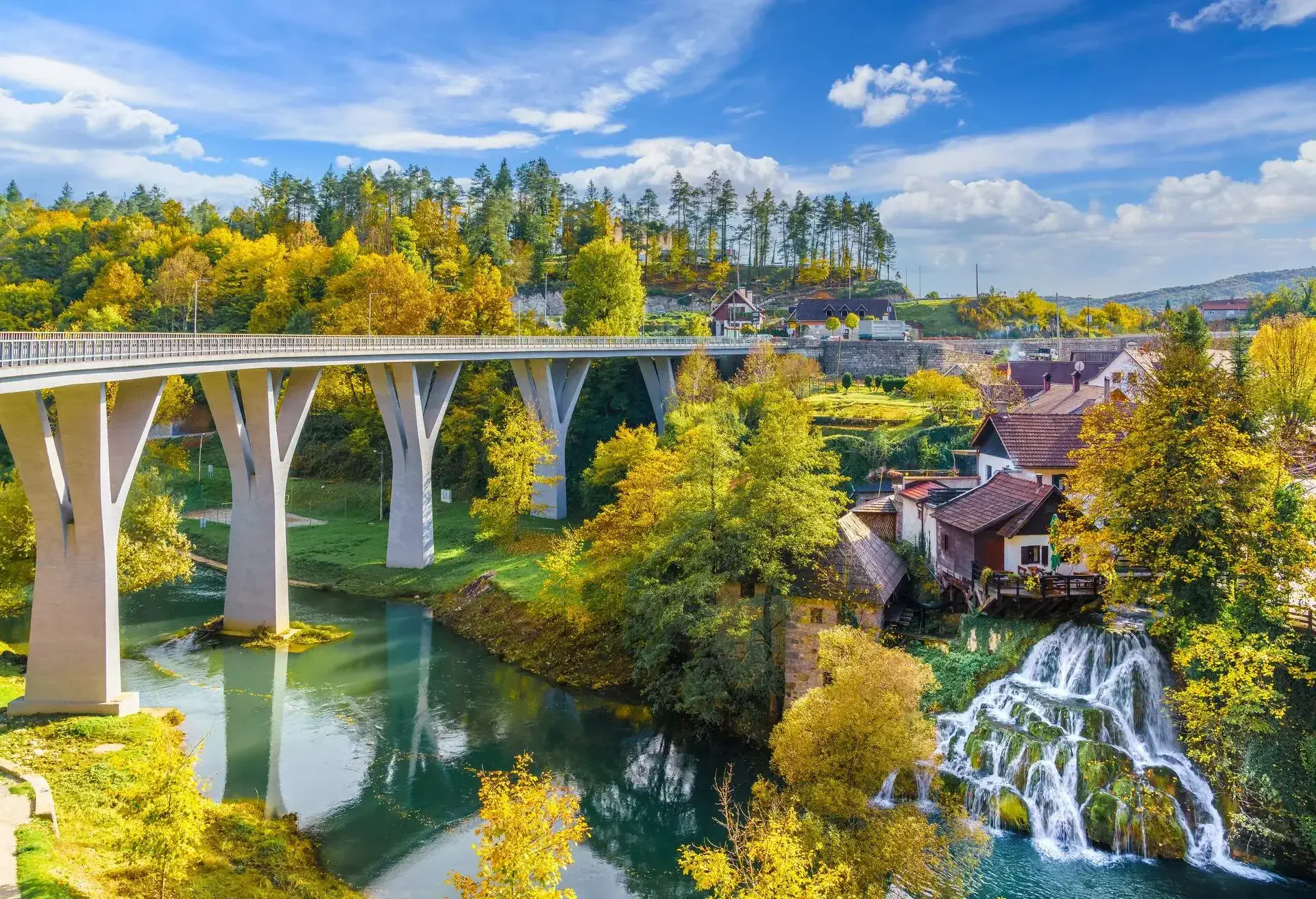
Most often overlooked by those attracted by the great waterfalls of the Plitvice Lakes is the historical village of Rastoke, near the town of Slunj, something of a gateway to the Plitvice. This quaint little town is a maze of waterfalls and waterways formed when the Korane River (that flows through the Plitvice) hits the Slunjcica. The result is a steady stream of waters that create little islands, spreading throughout the village lined with traditional wooden houses; it gives a charming, almost ethereal look of a village floating on gently foaming waters. Head to the northernmost end of the village where you’ll find a small bridge that takes you to the far side of the River Korana, for the best views of this spectacle. That being said, every view here is magical.
Mreznica
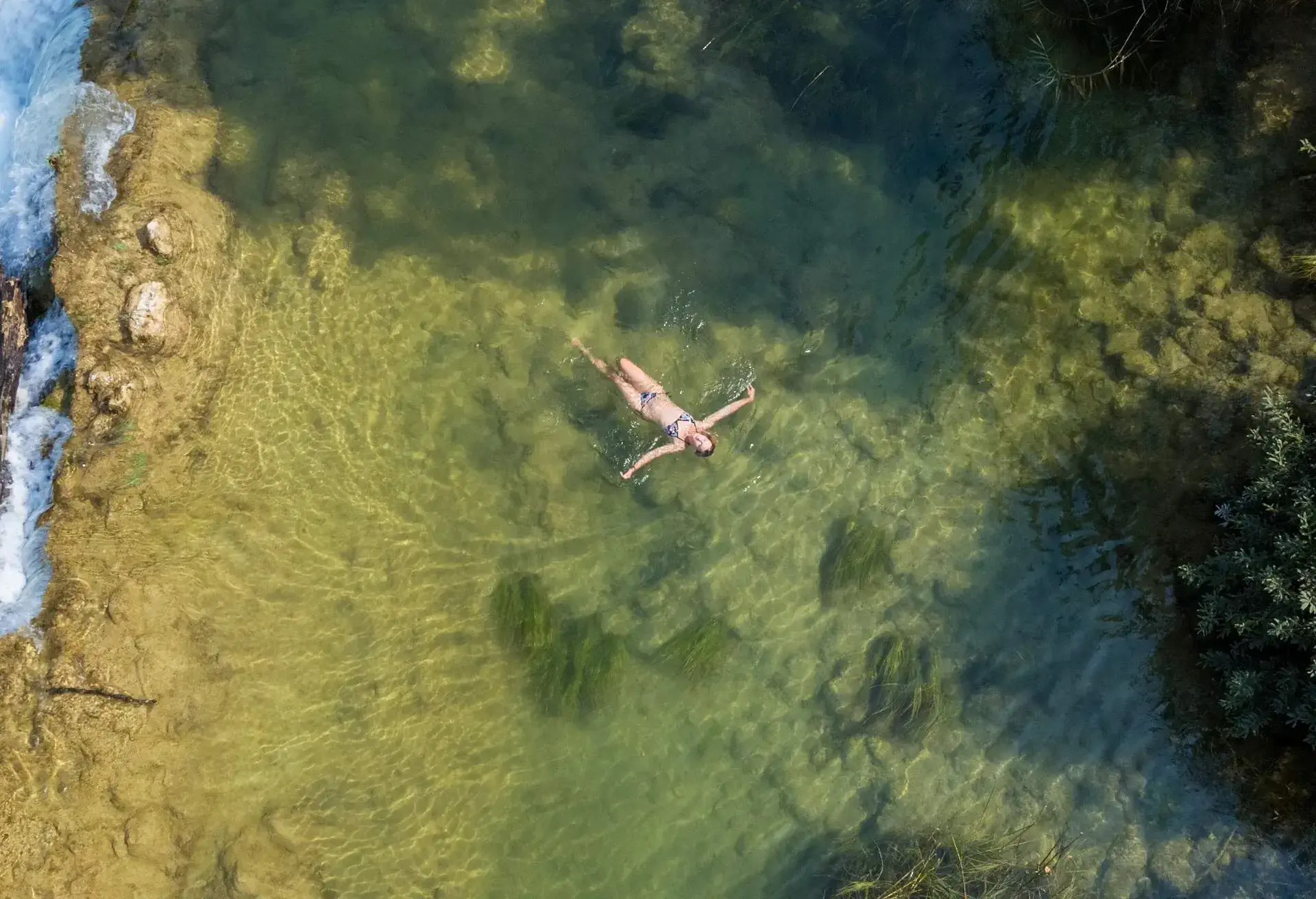
Another hidden gem in the heart of Croatia, between Rastoke village and the often crowded Plitvice Lakes, lies the Mreznica River; it has equally stunning scenery to match that of the nearby national park. You will find some of the most incredible waterfalls in Croatia here. It’s believed there are about 93 of them, and depending on where you are, you will be met by either rapid white-foaming cascading water or more gentle forms that lead to emerald clear waters ideal for swimming.
The surrounding area is completely unspoilt, where you will find water lilies covering riverbanks, complete with leaping frogs and even the stunning European pond turtle. This waterbody is suited to adventure sports, so if you head to the town of Primislje, you will find a lot of tour companies to organise a day out filled with diving, swimming and kayaking.
Kotli
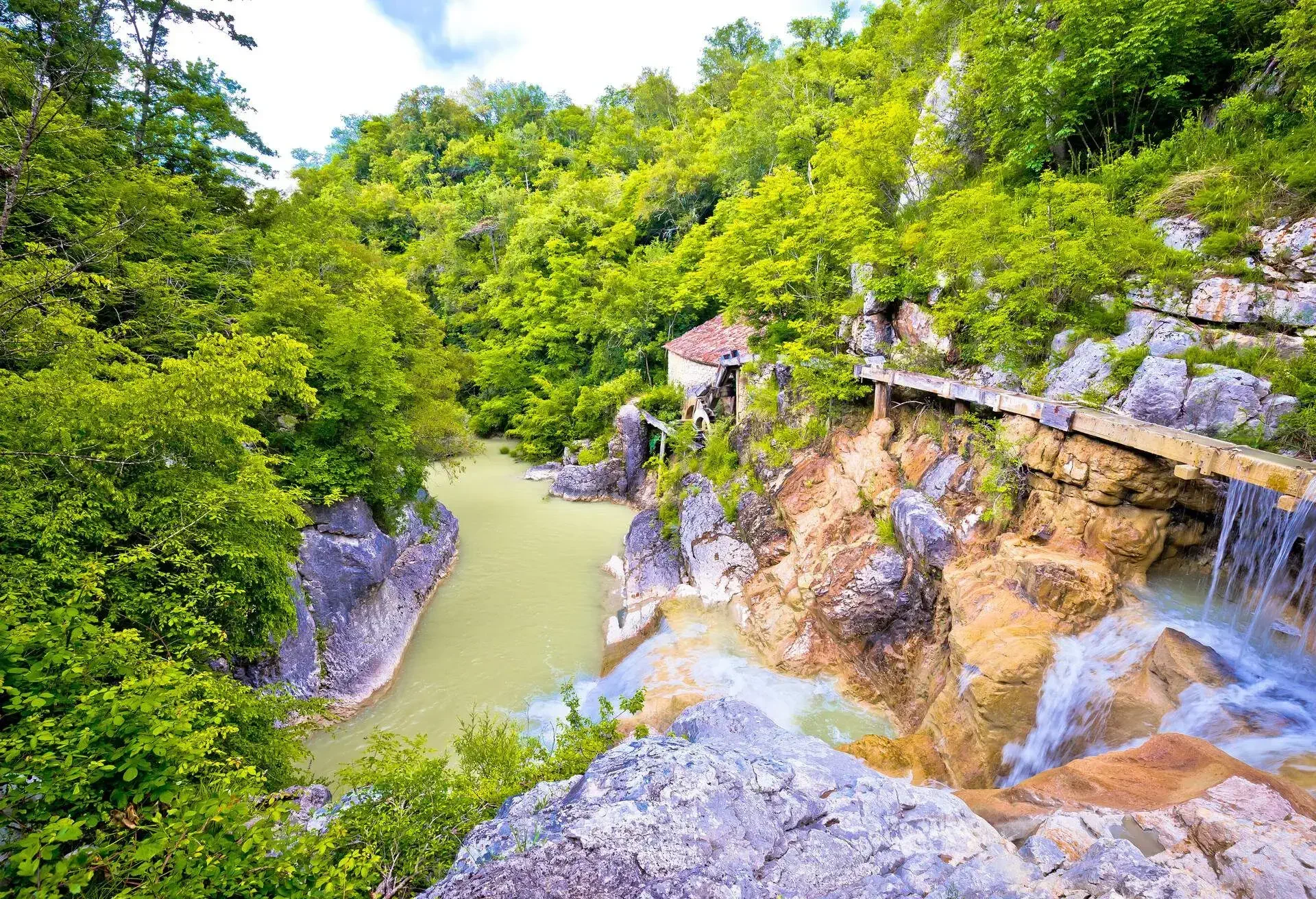
Hidden in the northernmost part of Istria is the green oasis that is the village of Kotli, between the towns of Buzet and Pazin. In the spring and autumn, which are also the best times to visit, the River Mirna flows back into the naturally formed indentations made in the characteristic limestone deposits of Croatia. This creates natural spas and wonderful pools to swim in. Visit the rustic Kotli tavern for authentic Istrian cuisine and great views of the emerald pools.
Excited for your next adventure? Our friends at Where to Go, produced by the team behind the award-winning DK Eyewitness travel guides, are here to help!
Each fortnight, hosts James and Lucy talk to local experts about the destination they have chosen to call their home, exploring their personal connection to the place, what makes it so special and the best things to see and do.
Listen to the podcast below for more inspiration and tips from Croatia:

